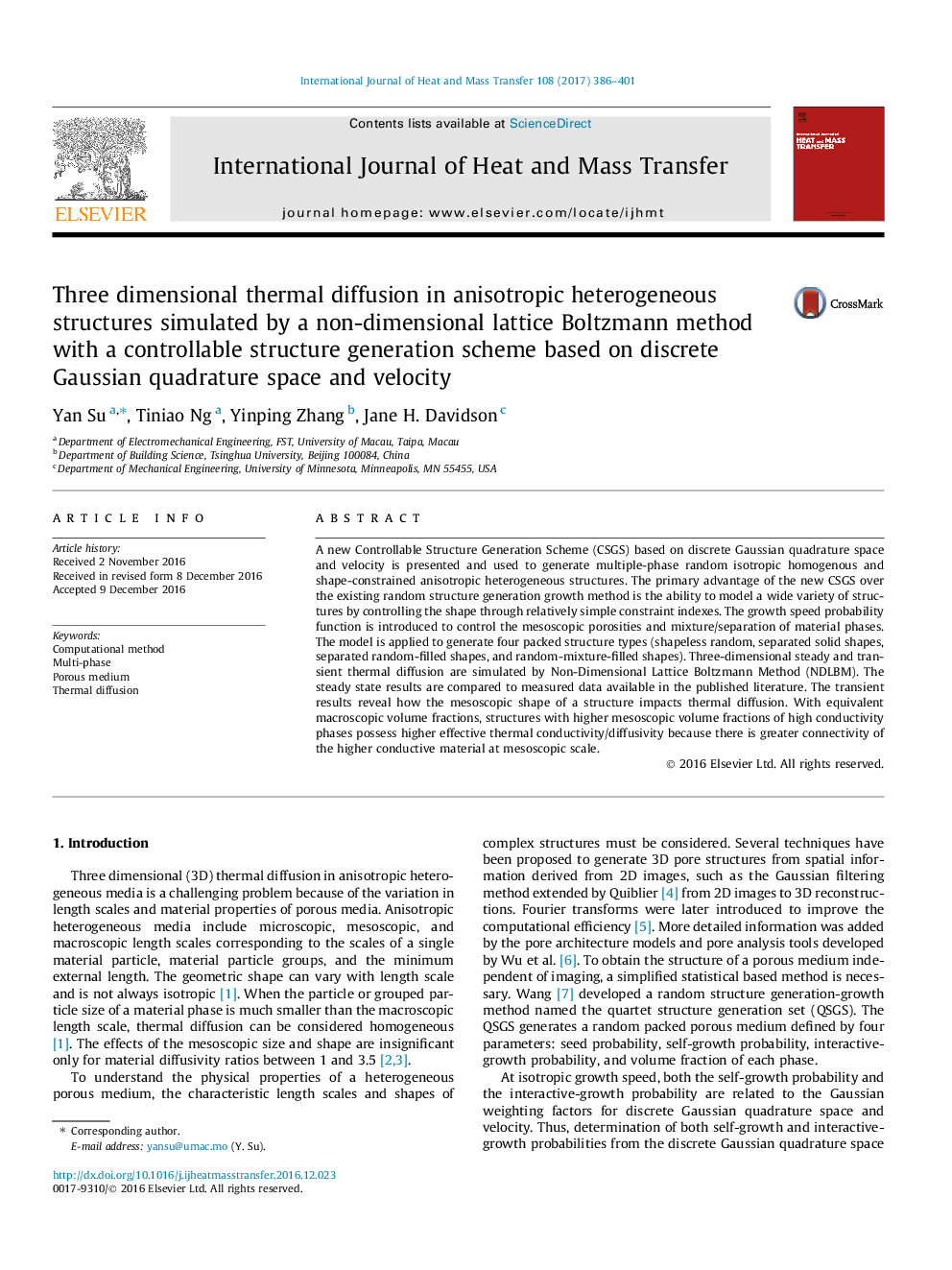| Article ID | Journal | Published Year | Pages | File Type |
|---|---|---|---|---|
| 4994285 | International Journal of Heat and Mass Transfer | 2017 | 16 Pages |
Abstract
A new Controllable Structure Generation Scheme (CSGS) based on discrete Gaussian quadrature space and velocity is presented and used to generate multiple-phase random isotropic homogenous and shape-constrained anisotropic heterogeneous structures. The primary advantage of the new CSGS over the existing random structure generation growth method is the ability to model a wide variety of structures by controlling the shape through relatively simple constraint indexes. The growth speed probability function is introduced to control the mesoscopic porosities and mixture/separation of material phases. The model is applied to generate four packed structure types (shapeless random, separated solid shapes, separated random-filled shapes, and random-mixture-filled shapes). Three-dimensional steady and transient thermal diffusion are simulated by Non-Dimensional Lattice Boltzmann Method (NDLBM). The steady state results are compared to measured data available in the published literature. The transient results reveal how the mesoscopic shape of a structure impacts thermal diffusion. With equivalent macroscopic volume fractions, structures with higher mesoscopic volume fractions of high conductivity phases possess higher effective thermal conductivity/diffusivity because there is greater connectivity of the higher conductive material at mesoscopic scale.
Related Topics
Physical Sciences and Engineering
Chemical Engineering
Fluid Flow and Transfer Processes
Authors
Yan Su, Tiniao Ng, Yinping Zhang, Jane H. Davidson,
